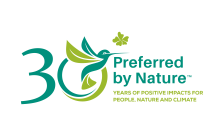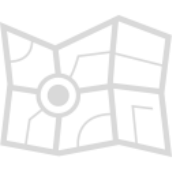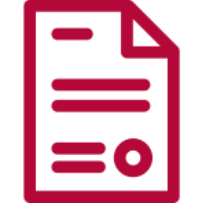Timber Risk Score: 20 / 100 in 2017. The Timber Legality Risk Assessment contains an evaluation of the risk of illegality in Bolivia for five categories and 21 sub-categories of law. We found:
- Specified risk for 16 sub-categories.
- Low risk for 4 sub-categories.
- No legal requirements for 1 sub-category.
This page provides an overview of the legality risks related to timber produced in Bolivia.
Forests cover 50% (54,764,000 ha) of Bolivia and have a high level of biodiversity, of which:
- 66% are primary forests, including rainforests in the Amazon lowlands
- Almost 34% is naturally regenerated forests, 41.2 million hectares of which have been declared suitable for forestry exploitation.
- A tiny area (around 26,000 ha) are planted forests.
Sawn wood is the country’s main industrial wood product and most of the production is exported. In particular, doors and furniture are exported.
Several legality risks are present in Bolivian timber supply chains. The risks are wide-ranging and appear across all categories of law. If you are sourcing timber from Bolivia you should take care to ensure the extensive risks identified are not present in your supply chains, or have been sufficiently mitigated.
Log export ban: Export of unprocessed forestry products has been restricted since 1996
There are currently no armed conflicts in Bolivia according to the Council on Foreign Relations' Global Conflict Tracker
FSC Certified Forest Area: 723,542 hectares (4 December 2019)
Information Gathering
Timber sources
- Find out the different sources of legal timber
- Determine which source type your timber comes from
| Timber source | Description of source type |
|---|---|
| Natural forest in permanent forestry production territories (TPFP is the Spanish acronym) |
Timber from natural forests in permanent forestry production territories. This is the primary source of timber from Bolivia. The following documents are required:
|
| Multiple use forest (TUM is the Spanish acronym) |
Timber from multiple use forests, which can be used for agriculture, cattle or forestry. The following documents are required for forestry purposes:
Once the forest clearing is done, the auxiliary agent must write a storage report and submit it to the Authority for the Social Audit and Control of Forests and Lands (ABT), which has the right to carry out an inspection prior to issuing the Forestry Origin Certificate (CFO - transport permit). A fee based on the usable volume must be paid. |
| Natural forests in buffer zones of protected areas |
Timber from buffer zones of protected areas. The allowed use depends on the protected area management plan. Only communities or private individuals with the corresponding ownership titles can use these lands. The following documents are required for forestry purposes:
Once the forest clearing is done, the auxiliary agent must write a storage report and submit it to the Authority for the Social Audit and Control of Forests and Lands (ABT), which has the right to carry out an inspection prior to issuing the Forestry Origin Certificate (CFO - transport permit). A fee based on the usable volume must be paid. A copy of all documents has to be submitted to the Protected Area Management Unit, which has the right to verify them. |
| Forestry plantations in community or private territories |
Timber from plantations in community or private territories. These plantations have to be registered with the Authority for the Social Audit and Control of Forests and Lands (ABT). The following documents are required:
A management plan is not legally required. |
Risk Assessment
Risk assessment summary
|
Legal rights to harvest |
|
Taxes and fees |
|
|
Timber harvesting activities |
|
|
Third parties' rights
|
|
Trade and transport |
|
|
|
|
Risk Mitigation
Mitigate the risks in your supply chain
Learn which actions we recommend to mitigate the risks associated with the timber sources from Bolivia.
Source Certified Materials
NEPCon believes that third party certification (for example FSC and PEFC certification) can provide strong assurances of the legality of the products they cover. Companies seeking to mitigate the risks of sourcing illegal timber should seek to purchase third party certified materials wherever possible.
While the European Timber Regulation does not include an automatic “green lane” for certified products, it does recognise the value of certification as a tool for risk assessment and mitigation. The European Commission says that companies “may rate credibly certified products as having negligible risk of being illegal, i.e. suitable for placing on the market with no further risk mitigation measures, provided that the rest of the information gathered and the replies to the risk assessment questions do not contradict such a conclusion.”
For more information on using certified materials in your due diligence, including how to assess whether a certification system meets EUTR requirements, see the page on Certification and Due Diligence.
Mitigation recommendations
There are five recommended actions to mitigate the risks associated with timber sources from Bolivia:
1. Fully map your supply chain
- Our supply chain mapping tool can help you do this.
2. Obtain and verify documents
- Land and tenure rights
- Harvesting licence resolution (for concessions)
- Property title; INRA certificate stating that the property is undergoing a sanitation process. Property shall be registered in the Royal Rights (all for privately owned land)
- Collective property title in name of the community and the legal entity of the community organisation. This title must be registered in Royal Rights (for community-owned land)
- Property title in name of the mother organization of the TCO; resolution issued by the Indigenous Mother Organisation Management by which a particular area is granted to a forestry community or organisation for forestry management purposes (for community origin territories)
- Property Registration Certificate (allodium certificate) http://bolivia-tramites.blogspot.com/2013/04/certificado-alodial.html
- Forest level documents
- Harvest license
- Approved Management Plan and Annual operational forestry plans (POAFs)
- ABT reports of inspections of the management areas
- Records on the monitoring of flora and fauna species
- Operational maps, including areas with environmental restrictions
- ABT’s authorisations and reports about the legal fulfillment of the forestry exploitation and management (POAF, IAPOAF) made by the title holder
- Tax related documents
- Tax payment receipts stamped by the relevant bank to confirm taxes have been paid
- The company’s debt clearance certificate
- Transport and sale documents. Check that the volumes, species, qualities and taxes match the invoices
- Health and safety related documents
- Payment receipt for medical insurance
- Document on Risks at Work
- Policies and Actions
- Payroll to confirm payment of social security contributions
- Official audit reports on occupational health and safety
- Employment contracts
- Documents related third parties
- Contracting agreements
- Review communal records approving use of forest resources and distribution of economic benefits
- Trade and transport documents
- Compare annual operation forestry plans (POAF), the species list in the management plan, the forest transport permits (CFOs) and invoices to check that the species match
- Sales documents
- Reports on legal compliance with forestry trade and transport regulations. The reports must show the level of conformance of different enterprises based on the national certification system in Bolivia (Bolivian System of Forests Certification and Incentives (ABT-Sistema Boliviano de Certificación de Bosques e Incentivos). http://tools.cfb.org.bo/downloads/directriz-abt-005-2014-reglamentacion-sistema-certificacion-bosques-incentivos-sbcbi.pdf
- Forest transport permits (forestry certificates of origin (CFOs))
- Customs declaration
- Import and exports permits
3. Consult stakeholders
- The Royal Right confirms that the property is subject to encumbrance and the name of the owner has not changed.
- Neighbours confirm the territory boundaries of the FMU
- Neighbours confirm whether there are any conflicts or potential conflicts
- Authorities determine the existence of penalties or violations made by forestry managers.
- Technical and field staff validate actions aimed at protecting flora and fauna, as well as improving knowledge and accountability
- Staff confirm training and updating on environmental and protection regulations in forest areas (buffer zones, protection areas, pollutants and their management, etc.)
- Staff confirm health and safety measures are in place:
- All safety and health regulations are followed
- Legally required protection equipment is provided by the organisation and used in the field
- Staff are covered by the social security and risks at work system
- Staff have received training on occupational health and safety
- The Confederation of Indigenous Peoples of East Bolivia (CIDOB) and community leaders confirm that a stakeholder process has been established that demonstrates prior and informed consent, and there are no other issues in relation with indigenous/traditional people rights
- Indigenous leaders in parent organisations of original community lands tconfirm there are no risks of violation of traditional /indigenous rights in the forest where the wood comes from
- Authorities conform whether there have been any sanctions imposed on forest managers
4. Carry out on-site verification
- Confirm that the forestry census data (POAF) are accurate and that the legal and technical restrictions are respected in the field:
- Harvesting must be conducted within the authorised boundaries and limited to authorised trees
- Harvesting must not take place in areas where harvesting is legally prohibited
- Tree species or selected trees found within the forest areas must fulfil technical requirements
- Harvesting restrictions must be observed in the field
- Confirm that legally protected areas are not affected and that there is no harvesting in protected areas. Confirm that forest operations are not carried out in national, departmental or municipal conservation or protection areas using geo-positioning information.
- Confirm the presence or absence of waste and its management
- Confirm compliance with safety at work. Visual inspections performed of: use of personal protection equipment, security signs and working spaces of the organisation
- Confirm that that material in question matches that on the invoice and CFOs
5. Conduct targeted timber testing
- Conduct timber testing on samples of purchasd material to verify the species or origin of timber, where appropriate












